UNDER THE SKIN: MAZDA AP4 RALLY CAR – A [KIWI-LED] RALLYING RENAISSANCE
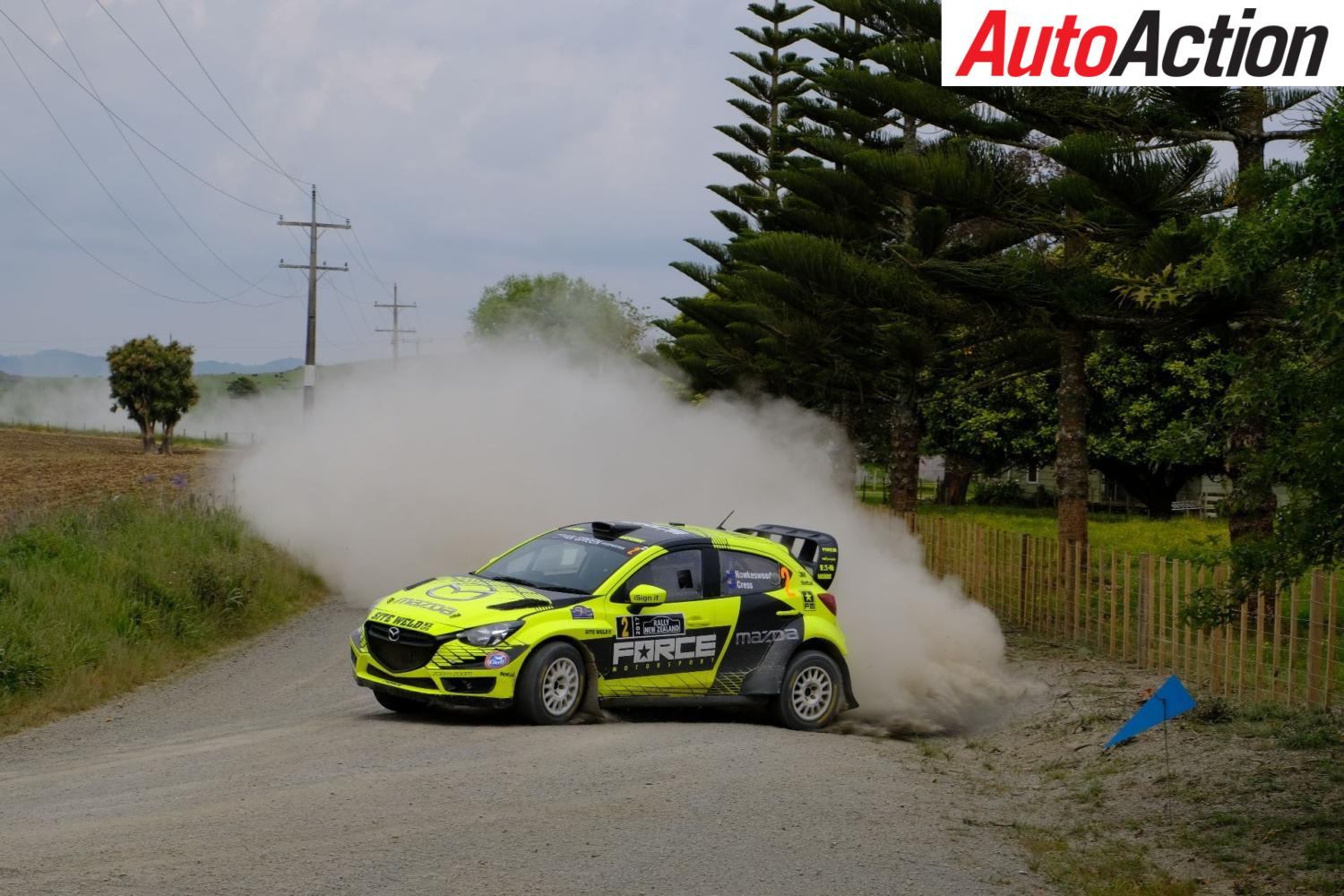
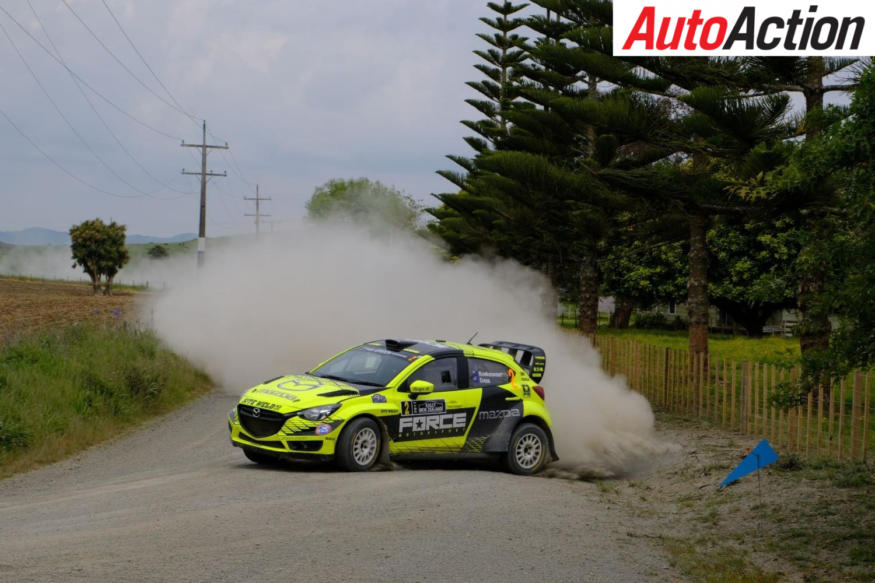
Mazda2 AP4 spec Rally Car
The relatively new AP4 specification of Rally Car has rejuvenated the New Zealand Rally Championship and looks like making its presence felt in Australia
By HEATH MCALPINE
THE YEAR is 2014, and experienced Kiwi rally driver and team owner Andrew Hawkeswood is looking for a new rally car ahead of the New Zealand season.
Hawkeswood looks at the Argentine Maxi specifications, but he thought it was along the right track, but still missing something. He also looks at R5, but that is way too expensive, considering parts needed to be flown or shipped from Europe.
So he and his Force Motorsport squad decided to try and have a go building its own rally car using a Mazda 2 as the basis and the Maxi rules as a guide.
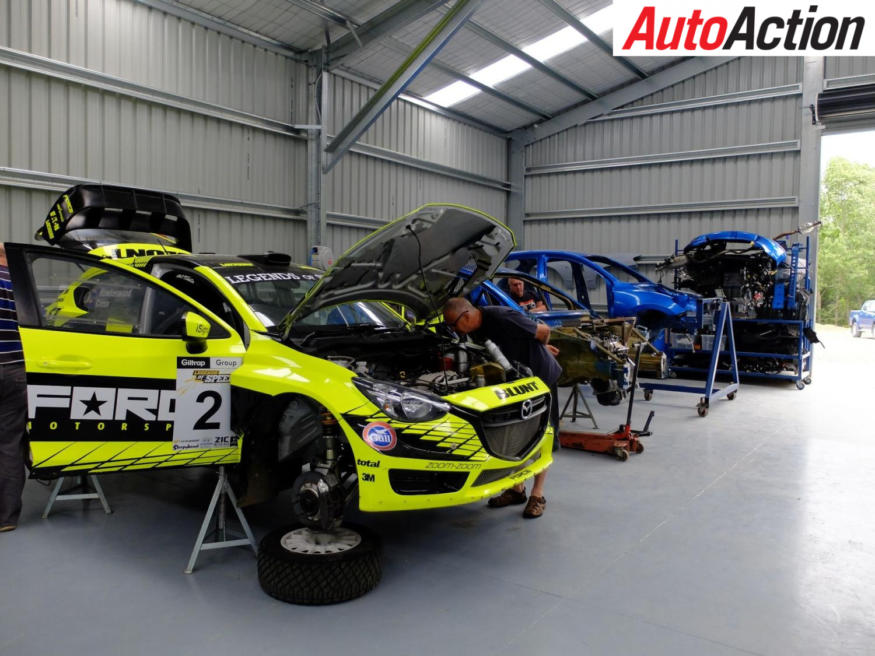
“Basically, when Subaru and Mitsubishi had finished doing what they were doing, we knew we needed something [to replace those cars],” Hawkeswood told Auto Action.
“There was R5, ex-WRC and the Maxi cars out of Argentina; Emma Gilmour was the first one to do that. We sort of had a look at it, we played around with it and built one car, we had a relationship with Mazda and they said to us ‘if you want to be taken seriously, you have to make them look like our cars with an engine and gearbox configuration, and didn’t want to know what was Subaru about them.’ Marketing people, it would be easy to get around that, but technical people like the people I deal with through Mazda New Zealand, we couldn’t do that.
“That’s pretty much where we had to start going our own way – and we couldn’t start producing parts that were made Argentina without a licence, so we had to come up with our own plans. The Maxi car is still allowed under AP4 regulations in New Zealand and then you have the design that we came up, which is the secondary one. And look, if anyone else is stupid enough and thinks they can make money out of another design, it’s open for them to do it.”
Fast-forward four years and Hawkeswood is the reigning New Zealand Rally Champion and is competing against 14 other similar spec cars, and there are another five in Australia. Manufacturers have come onboard, namely Hyundai, Mazda and Holden, through none other than multiple Bathurst winner Greg Murphy. Another seven manufacturers are represented by private teams and AP4’s rise seems to be here to stay. But is Hawkeswood surprised by the success?
“Absolutely, I just wanted to do it for myself and if it didn’t work, it didn’t work I wasn’t too phased. I just like building cars so it didn’t worry me,” affirmed Hawkeswood.
“It has sort of turned into a bit of an animal to be honest, we do a bit of work in development and mining and bits and pieces like that, so it’s my secondary job and it takes a bit of time up.
“It’s a good thing. I think the proudest thing is we did the championship last year and managed to win it, but it went down to the wire, until the last stage and there could have been three people who could have won that championship. To me that’s racing; I’d watch a good game of tiddlywinks, I just like watching something that is exciting and it’s no good having one or two good cars that can win. In one those rallies there could have been six to eight teams you could have thrown a blanket over and who could have won any of those rallies.”
The first car was a then-new shaped Mazda 2, which turned out to be the perfect base for what the Force Motorsport team was planning. The car shared the same underpinnings with the Mazda CX-3 SUV and with an ex-Prodrive engineer, the team, which consists of three full-time workers, set about building the first AP4 car. The car was completed in early-2015, but the regulations were still up in the air.

“We had Haydon Paddon come over in 2015 and pretty much out the box he jumped in it, went up the road and came back, and said ‘well it’s not the latest spec WRC, but it’s like 95 per cent, it’s not far away,’ explained Hawkeswood.
“The platform is really, really neutral,” he says, “which was really encouraging so at that stage – about September 2015 – everything was still up in the air a little bit. But once we had someone of his calibre drive it, then I had a couple of other people drive it and they said ‘it drives really nice, it’s like a go kart, it’s like a race car.”
The basis had been set. Hyundai was the next brand to commit by ordering an i20 for Paddon to run in selected local events, while a Skoda Fabia was also ordered and built. However, development of Mazda hasn’t ceased, with Force Motorsport developing a turbocharged version of the 2-litre Skyactiv motor, which is in its initial stages.
“We just went for reliability and trying to turbocharge a non-turbocharged engine, especially with the direct injection and a few other things like that, it’s really going into the unknown,” said Hawkeswood.
“As far as we are aware, we are the first in the world to be turbocharging the Skyactiv engine, a non-turbocharged version of it. That’s been quite exciting. We have built enough inlet manifolds to know that they never last; you can’t fabricate the manifold that can take full boost and full vacuum 80 times in a minute and the temperatures. They just never last, so that’s why we have spent the money on cast inlet and making a really nice exhaust for it. Basically, just concentrating on things that we have learnt in the past.”
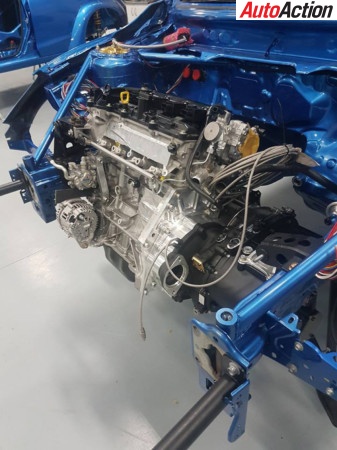
Not a lot is done to the motor apart from the installation of the turbo. The 2-litre motor is destroked to 1600cc, thanks to a custom crank and most of the replaced parts are stronger parts that can handle the tough rigours of rally competition.
“We strengthen the block quite a lot. We machine some plates up to press into the block and then basically the bits that are mounted onto it. We change the valves and springs, we basically leave the cams standard because the Skyactiv engine has both inlet and exhaust cams that are fully adjustable.
“It’s a pretty amazing engine to play with because you can try some many different cam inlet and exhaust timing settings at the touch of the button without needing to read the cam. It has a hydraulic reactive exhaust cam and an electric on the inlet cam, but again that is one of the things that we really need to try and make sure is reliable.”
Competition is prevalent within the regulations, as a number of manufacturers products can be used in the car, keeping costs down. The brakes are a prime example of Hawkeswood’s philosophy because AP, Alcon and Brembo have items that will fit on any AP4 car. In the case of the Mazda2, Force uses Alcon four-pots and rotors all round.
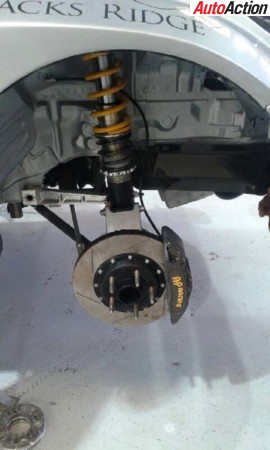
The Sadev gearbox and rear diff come as a package, and are predominately used on the rallycross courses of the US and Europe. It is a six-speed sequential unit and is capable of handling as much as 920Nm, which is more than enough to handle the fast, flowing stages of New Zealand.
“I think with all the equipment, the gearbox is NZ$50,000 for the gearbox, the rear diff and the unlocker,” Hawkeswood said.
“If you compare that with a Holinger, buying a brand-new centre diff and other bits and pieces, it’s about $13,000 less to run a Holinger.
“There is nothing wrong with a Holinger, the only issue is that, because they are made for an Evo X engine, an adapter plate needs to be made. I mean we need to make an adapter plate now, but it’s a nice unit and has a generic bell housing, so it’s made to have a new bell housing made.
“The diff has a hydraulic activation from the handbrake that unlocks the front-to-rear drive. They’re constantly locked, which is another good thing – all the five cars are like that now – there’s no hydraulics or pumps, no active centre diff, it may not be perfect, but it’s constant and never changes, so you can set the car up. A constant 50-50 split may not be perfect, but it never changes.”
The chassis uses the road-car shell with chrome-moly caging throughout, and takes approximately 300 hours to complete.
Because Force Motorsport has more experience with the Mazda, its build time is closer to the 200-hour mark, and a complete car is close to 1000 hours, whereas if it was another brand, it is closer to 1200. The opportunity to build your own car is encouraged as Australian teams High Country Motorsports, Evans Motorsports and Neal Bates Motorsport have undertaken builds in the last 12 months.
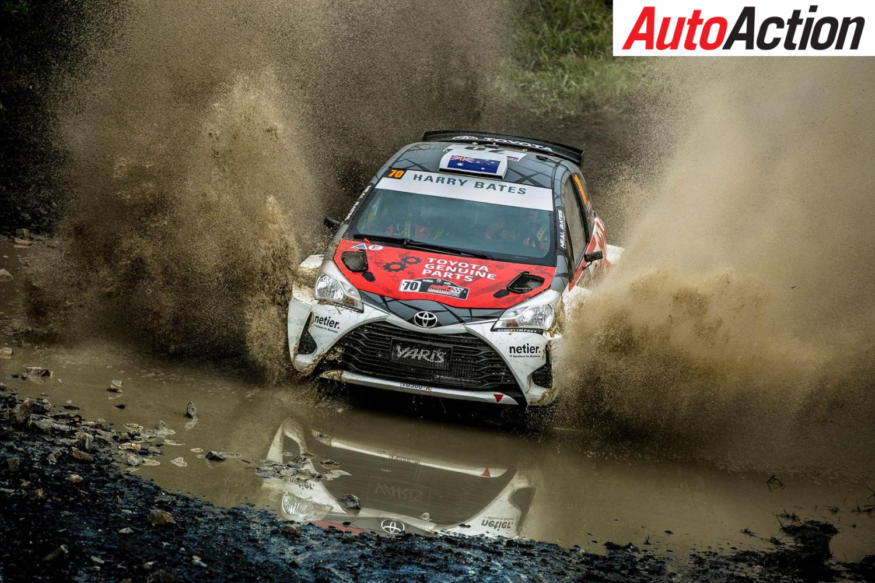
Neal Bates Motorsport built AP4 spec Toyota Yaris
“We were a bit concerned that if one person has the licence to produce the parts, they’d get a monopoly on it,” Hawkeswood explained.
“It was a two-edged sword because I was in the box seat, and because I was a competitor, I didn’t want to be perceived to be making money out of it.
“At the moment, it’s still open for someone to come up with an alternative design. It would be quite difficult, but the door is still open. The thing with most Aussies and Kiwis is that we charge $2200 for a sub-frame. I looked at what was the absolute limit for somebody not looking to make their own one.”
There is a Toyota currently being completed in the Force Motorsport workshop, which will be the final ‘non-Mazda’ car built. Hawkeswood wants to focus his attention on one specific manufacturer, with the goal of further developing the Skyactiv motor and the manufacturing process.
“We’re building one more Toyota at the moment, but we’re only going to build Mazdas. I mean we’ll make the parts and make the jig available to anyone that wants to build anything else, but we as a company ,just want to concentrate on Mazda.
“The difference between the first Mazda we built and the one Brendo [Australian rally driver Brendan Reeves] drove – it’s only three cars – is a quantum leap, and I think by the time we get to 10, we’ll have the product. You have the R5 Fiesta, of which M-Sport have sold 250, but I think by the time we get to 10 or 15 we will have a really good product.”
The Mazda 2 features custom MCA fully adjustable coil-over suspension and uses Speedline wheels that are straight off an Evo X. These features hide under a spectacular fibreglass bodykit, which took inspiration from the old-style WRC cars. The designs were initially created out of foam by Glenn Turner, who created a mould that was to Hawkeswood’s liking. No wind tunnels or aero testing to be seen. Further development in the material used rather than the aero-efficiency is next on the agenda.
“We’re trying to get Kevlar into it. I have a guy near me who makes panels for a reasonable price, so if we can get more Kevlar, we could probably save the panels a bit more because we give them a fair whack.”
Maintenance consists of a standard pull down at the end of each rally, with the most troublesome part of the car being the rod ends, which Force Motorsport is further developing. Mid-season the CVs are replaced, but the wheel bearings can last for up to two seasons, and this is one of the areas where the reduced running costs come into consideration, when accounting for the initial outlay for the car.
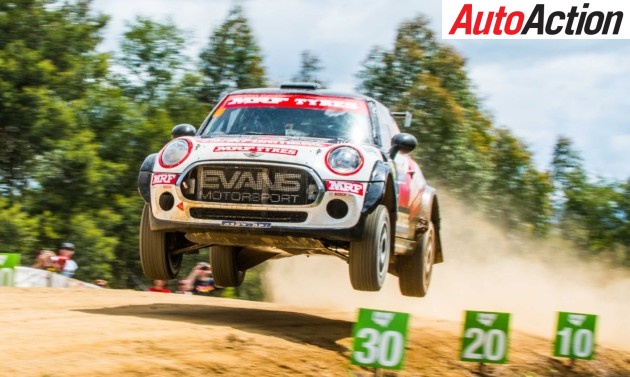
Eli Evans debuted his AP4 Mini mid-last year
The future of the class is looking good for both Australia and New Zealand. Neal Bates Motorsport’s new Toyota Yaris AP4 debuted late last year, Eli Evans debuted his AP4 Mini mid-last year and a Volkswagen Polo AP4 is currently being built by High Country Motorsports, with plans for customer cars in the future.
Hawkeswood built a prototype two-wheel drive AP4 car for his son Jack, but unfortunately the youngster rolled it a combined 10 times in one weekend. The car has since been converted to four-wheel-drive.
“It really worked well,” enthused Hawkeswood.
“It is probably the most expensive two-wheel-drive car you could build, but the conversion to four-wheel-drive was really simple. All the engine mounts, the wiring loom, all the brackets in the car to turn it into four-wheel-drive, the rear sub-frame; everything was set-up for four-wheel-drive without the diff in it.”
Could this be the future of rallying at a National level? Could we see a Tasman Series-style Aussie vs Kiwi rally title downunder?
The last comment may seem a bit outlandish, but the stage is set – and after some false dawns AP4 might be just the formula to provide the discipline of rallying the shakeup many believe it needs.
Article originally published in Issue 1728 of Auto Action.
For our latest Under The Skin feature pick up the current issue of Auto Action Magazine, on sale now. In the meantime follow us on social media Facebook, Twitter, Instagram or sign up for our weekly email newsletter for all the latest updates.

